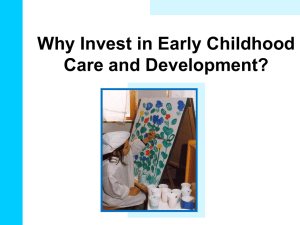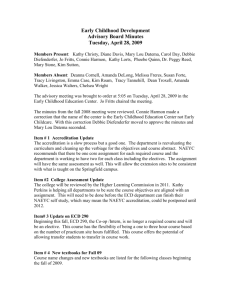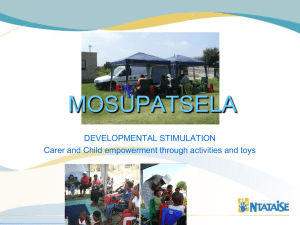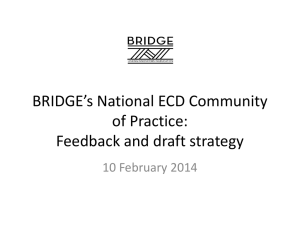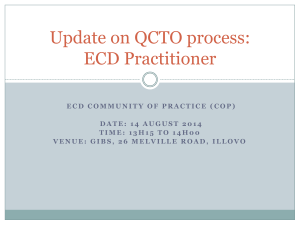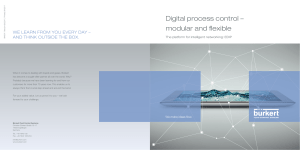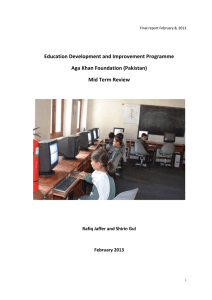Parveen Pakistan
advertisement
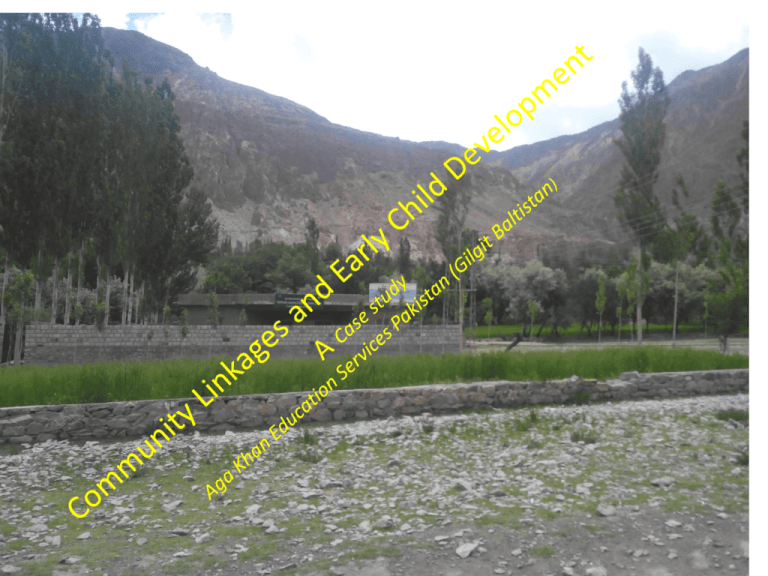
Aga Khan Education Service, Pakistan Education Development and Improvement Program (EDIP) Gilgit-Baltistan 2011-2015 Map of Gilgit Baltistan Gilgit Baltistan GILGIT - BALTISTAN HISTORY • Location: Northern Eastern part of Pakistan • Area :72,490 square kilometers • Geographically consist of fragile, high mountain environment and extreme climatic conditions • It is surrounded by four of the world’s greatest mountain ranges the Hindu Kush, Himalayas, Karakoram and Pamir • It has one hundred and one peaks above 7000 meters including Nanga Parbat and K-2. About half of the area is located above 4500 feet. • Administratively, has been divided into seven units called districts of Diamer, Ganche, Astore, Skardu, Gilgit, Hunza/Nagar, and Ghizer • Agriculture and livestock is mainstay of nearly 90% rural population. Only 2% of the total area is cultivable • Total of 650 small and widely scattered villages with 30 to 600 families residing • The 1998 census reflected 2.42% growth rate • Female population is 48%. Challenges CHALLENGES • • • • • • • The presence of a difficult terrain comprising the snow-clad mountains and rivers, coupled with unfriendly climatic conditions and an undeveloped communications infrastructure confront the local population with numerous challenges. 23 percent of population live below the poverty line. The per capital income in Gilgit-Baltistan was PKR 7,500 per year. Literacy rate in the Gilgit-Baltistan is 44%. CHATOORKHAND Chatoorkhand • Chatoorkhand is the capital of Ishkoman. a high mountain valley in the Hindukush and Karakorum mountains in northwest region of Gilgit • Administratively, Ishkoman valley constitutes Tehsil of Ghizer District located at a range of altitudes, from 7,000 to 12,000 feet (2,100 to 3,700 m). • The valley consists of 20 villages, with a total population of 30,000 inhabitants. • Three major languages are spoken here: Wakhi, Khower,Shina, and Burushaki. Challenges: Among the numerous challenges hampering the efforts to improve education, inadequate resources, sectarianism, lack of political will and inadequate accountability mechanisms at various levels have resulted in the disintegration of education process in the public system. Purpose of Research PURPOSE OF RESEARCH Purpose of Study: • Observe and document distinctive features that contribute to the effectiveness of the AKESP –LRS programme in Gilgit Baltistan that works closely with marginalized communities to provide support to young children and families; • To collect information on specific forms of linkages that are formed between programme and communities; highlight key characteristics/ factors and know how and why these support effective practices; and • Identify potential areas for further strengthening of the programme Sampling 1) Learning Resource School principal, 04ECD teachers, parents (20), 04 VEC members 2) Cluster school Govt High Sec School principal, 01 ECD teacher, 05 parents, 05 SMC members 3) Cluster School NEF Principal, 01 teacher, 01 member of community society RESEARCH QUESTIONS Research Questions Research Questions (General) – What are the characteristics of the community / context in which AKESP programme operates? – What is the nature and scope of the programme? – What is / are the intended purposes of the programme? – What is/ are the intended outcomes of this programme? – What are the perceived benefits of this programme (programme staff & management; parents / caregivers; community leaders; funders; policy makers)? What are the observed outcomes / benefits of this programme (what do you see as being beneficial to children & communities; what do you see as potentially detrimental)? – What are the factors that contribute to effectiveness of this programme? – What current (and potential) programme-community linkages are (could be better used in) supporting programme effectiveness? RESEARCH DESIGNS Research Design Researchers based within the communities for a period of 4 weeks in two phases . During this period, researcher worked closely with programme staff to become familiar with the programme and community to get in depth understanding of linkages and gain access First week: to make inroads, get comfortable, become accepted by communities and programme staff); Two weeks: Researcher engaged in intensive data collection (interviews with key stakeholders principals ; observations; FGDs with ECD teachers, ECD parents & members of community councils ; meetings with Teacher educators , home and community visits, followed by continuous data recording and documenting , based on the key research questions. RESEARCH METHODOLOGY Research Methodology Case Study to uncover contextual features that contribute to (or present barriers to) effective early childhood programmes in order to better understand ways in which inclusion, sustainability and equity built into early childhood programmes, particularly those that are serving children in ‘hardto-reach’ contexts (geographically remote, marginalized, etc.). Steps: 1. Developing tools 9 Re-interviewing 2. Consent taking 10 Home visits 3. Careful for Ethical Values 11 Anaylising Data 4. Rapport building 12. Searching Themes 5. Listening to researches 13. Statistical Analysis 6. Video taking 14. Qualitative Analysis 7. Note taking 15. Conclusion 8. Transcription 16 Reporting . CONTEXT OFof CASE STUDYStudy Context Case Amongst the three education providing agencies in Gilgit-Baltistan namely • Government Education Department, • Aga Khan Education Service, Pakistan (AKESP) and • Private schools system Government Education Department is the largest catering to the needs of almost 70% school-going children. Total number of government (i.e. formal, informal and Madarassa) schools at primary level is 1,297, out of which, 208 are girls’ schools. At Middle level there are total 244 schools; out of which 74 are girls’ schools. At the Secondary level the total number of schools is 142 out of this total 37 are girls’ schools. AKES,P network of schools, catering to the needs of 12 % school-going children primarily dedicated to female education. Aga Khan Education Service, Pakistan started functioning in 1946 in Northern Areas of Pakistan now known as Gilgit-Baltistan. It was in 1960s when emphasis was given to girls’ education and in 1980s AKES, P established premier institutions such as AKHSS Hunza, AKHSS Gilgit, AKHSS Gahkuch and Aga Khan School Sherqilla . INCEPTIONof OF ECD ECD BY Inception byAKESP AKESP • From 2007 to 2011 through “Releasing Confidence and Creativity Program” (RCCP), AKES, P focused on Early Childhood Development (ECD) initiatives. • In 2010, AKES,P, with the support of Aus-AID and technical support of AKF, partners launched Educational Development and Improvement programme (EDIP). PROGRAMME APPROACH Programme Approach • Building on the experience and learning of past interventions, the EDIP took up a Whole School Improvement Approach (WSIA) • A cluster-based approach was followed to develop field-based supportive networks. • The structure also allows for the development of one base school in each cluster to reach a higher standard of quality and work as a central hub of quality. PROGRAMME MANAGEMENT Programme management The Management structure AKF(P) AKESP EDUCATION CSRC AKU-IED NOWPDP AKPBSP FOCUS AKU-HDP GOVE RNME GOVE NT RNME SCHO GOVE NT OLS RNME SCHO GOVE NT OLS RNME SCHO NT OLS SCHO OLS GOVERNMENT SCHOOLS DEPARTMENTS / INSTITUTIONS COMMUNITY AND PRIVATE SCHOOLS EDIP GOALS OBJECTIVES EDIP GoalAND & Objectives Goal Objectives • To contribute to the overall socioeconomic development of GilgitBaltistan • To enhance access and equity for education in the target districts of GB • To improve the quality and relevance of education: • To strengthen governance and management MONITORING MECHANISM Monitoring Mechanism Formulation of Steering Committee Program Team • Develop Work Based Plan • Execute the desired activities COMMUNITY CommunityENGAGEMENT EngagementSYSTEM System A COLLABORATIVE PROCESS A Collaborative Process National Council Decision Makers Regional Council Approval, coordinator Local Council Monitoring & support Village Education Committee Implementers/ Reporters All these committee members are representatives of the community, work as volunteers for a period of 2 years & are being nominated by the community . Each committee have several social welfare departments functioning with prime objective of socio- economic development of the people of Gilgit Baltistan. They follow Top to Bottom Approach, all matters first brought to NC which is a decision making body for discussion & approval. VEC was the final implementation body. Memorandum of Understanding Signed between the LRS & VEC to support schools in all matters related to parental involvement, child enrollment , absenteeism, fee payment & child performance. VEC works in close contact with school heads and also have representations in thee Steering Committee. EDIP Cluster Based Model EDIP CLUSTER BASED MODEL SOME IMPORTANT FEATURES OF THE CLUSTER BASED MODEL • Whole School Improvement Approach (WSIA) • School based model in which teachers within schools and clusters learn and work together • Central importance is given to teachers’ knowledge, students’ learning and realities of classrooms • LRS as a hub of resources for the cluster schools • TEs are based in each cluster to give intensive support to the schools (close monitoring, proper follow up) • Frequent professional development opportunities for teachers (workshops/sessions) • Close working relationship and support mechanism from the government education department Cont.… CONTD.. • Implementation of 04 years ECD model • 02 teachers system in ECD classes • ICT, Library, school building, improved teaching and learning practices are as a source of motivation for communities and students (enhanced enrolment) • Role of TES as supporting factor both for academics and administrative activities • Financial support to the needy students for the retention of students enrolment • Positive competition amongst schools EDIP INTERVENTION EDIP Thematic Areas Professional Development Conducive Learning Environment Early Childhood Development (ECD) Female Human Resource Development and financial support to needy students Community Involvement Adult literacy centers Students Learning Exit strategy EarlyEarly Childhood Development Childhood Development(ECD) (ECD) Teaching in ECD classes • • • • • • • • • High Scope Approach Integrated Curriculum (Thematic) Routine Time Table Holistic Development Focus Student Centered Activity Based Teaching (Learning Corners) Social skills Informal Assessment system Systematic Recording & Reporting COMMUNITY ENGAGEMENT Community Engagement Community Engagement: Different types of Local Level Institutions (LLIs) engaged for community mobilization. In AKES,P schools there are Community Based Education Societies (CBESs), WCBSs and mothers are also involved. The government works with School Management Committees (SMC). Mother Support Groups (MSGs) were set up in 150 Government Schools with the assistance of a UNICEF project, and this deemed to be a good initiative and Institution to tap. Partners felt that CBESs, SMCs and MSGs should be the main LLIs with which EDIP works, although Parent-Teacher Associations (PTAs) are also present in some schools. Community Involvement COMMUNITY INVOLVEMENT • Meetings with VECs/SMCs/parents. • Celebrating Mothers & Parents days • Inviting community to participate in different events such as; Pakistan Independence Day, Hand wash day, Teachers day and science and arts exhibitions etc. STRATEGIES OF of COMMUNITY INVOLVEMENT Strategies community involvement • • • • • • • • • • • • • • • Signing off official agreement School & VEC aware of roles & responsibilities Answerable for actions Involvement of CBES ( WBES, MES) Frequent meetings with school heads / community Official agreement (SOPs) for all ( VEC, SMC, PTA) Representations in ‘Steering Committee Active Involvement Advocacy Campaign (Joint effort) Lectures at religious places (Joint efforts) Door – To- Door monitoring Active participation of parents in child learning and school events Community based Meetings and speeches from Teacher Educators Awareness sessions (Health & hygiene) for mothers Literacy sessions for parents / mothers Significant Observations SIGNIFICANT OBSERVATIONS Thematic Discussions based on Findings and Documentation The themes identified and discussed in the paper is an attempt to understand the key characteristics of the programme SECTION A) Theme 1 Understanding EDIP early childhood programme. SECTION B) Theme 2 The perspective of collaboration, the role of family/ community and stakeholders for purpose of provision of early year services SECTION C) Theme 3 Curriculum and practice stresses the dynamic nature of early education and to move away from prescribed curricula to ‘learning frameworks’ based on the principles of development, learning and pedagogy with emphasis on the active and interactive nature of early learning. The paper outlines the synergy creating strategies to blend early education into existing education system by practically and conceptually supporting the philosophy of ‘Holistic Development’. SECTION D) Theme 4 ‘Towards Effective Learning’ emphasis the practices to support the development of whole child and to focus on how to support effective learning. The section highlights the role of adults in supporting children to be competent and masterful learners from the earliest age. SECTION E) Theme 5 Professional development for early child education discussed how well educated early years practitioners can contribute to and sustain quality early education which in turn yields positive short and long term impact for children. The concluding comments clarify and summaries the key learning/ messages across the paper. Contd.Key Aspects 1)Children interaction and Quality of Learning, 2)Social competences and positive approaches to learning, 3)Learning is a social process ,4) Emotional wellbeing and communication skills,5) Cognitive and general knowledge, 6)Developmentally Appropriate mixture of education and care,7)Effective Learning Environment, 8)Teachers Observing children in action provide experience and environment that facilitate learning, 9)ECE and Policy development measures building upon ‘Equity’,Early Year services and role of private organization, 10)Demand for early Education service increased , 11) Increased access, affordability & quality of ECE environment settings for children, 12)Changes in Structural and Conceptual adjustments for ECE system, 13)Teaching Practices reflect the sensitivity of child development, social context and active, interactive nature of early learning, 14)Emphasis on meta cognitive dimension influences academic development, 15)Recognizing the importance of development pedagogy, as well as curriculum for effective early education is a challenge Noteworthy Practices of AKESP EDIP Early Child and Development Programme Continue • • • • • • • Valuing the Importance of Diversity and Equity and its Impact on Children of Early Years Facilitate collaboration between Government and AKESP to promote and build early childhood capacity teachers. Create purposeful ECD environment spaces for learning and support within existing settings that are suitable for families with young children Foster relationships among and between families and teachers spanning early childhood settings Early childhood practitioners play vital role in supporting impartial learning and development outcomes for children. .Early childhood practitioners build strong and respectful partnership with families and communities in order to provide the best support for learning and development Early childhood practitioners’ assertiveness towards diversity touches children’s wellbeing, self- esteem and academic outcomes. Attention aspects ATTENTIONseeking SEEKING ASPECTS • • • • • • Design activities specifically target reasons for children not being in school Improve ECD interventions in Govt . Schools Awareness for parents considering their children to be too young; A lack of awareness of the importance of quality ECE or female education among Govt. Community based school teachers More Emphasis on Inclusive education interventions with the aim to target parents who think that education may not be appropriate for children with disabilities or girls, or that the school would not be able to cater for children with special educational needs, or have the necessary infrastructure to enable disabled students to access education Financial: While AKES, P attempted to make sure its schools gradually become more self-sustainable; commitment from other sectors in the form of agreements were made so that e.g. Additional teaching staff for the early years (ECD) will be maintained, beyond the life of the Programme. It is anticipated that the results of the Programme will enthuse communities and the government to make such commitments. However, this is perceived to be a challenge that requires concerted efforts. ContdCONTINUED 7) Socio-cultural aspects: As education, disability, gender, exclusion and poverty proved to be emotive subjects in remote and ultra-poor areas of GB. There is a dire need to take great steps towards cultural sensitivity in encouraging for example, the very young and girls and those with disabilities to access education. People are vulnerable to security concerns and deteriorating law and order situation 8) Lack of motivation and ownership: Govt. teachers have non serious attitude towards young children because they are not paid teachers, 9) Theory to Practice: The teachers and education managers as well as government professionals to put their new skills and knowledge into practice for better future generation RECOMMENDATIONS/ LEARNINGS • • • • • • • • Develop a strategy with GoGB to provide a sense of security to poor community and improve deteriorating law and order situation Govt of GB to give official status to ECD system in education and treat teachers equally by official recruitment increased momentum for sustained change and improvements will ensue, particularly in districts and regions where AKF (P) have been working for some time. long-term sustainability measure it is important to strengthen the programme intervention by targeting teachers, but it is equally important to target all the available entry points within the system as a way of encouraging systemic change, even though at the lowest levels. Increase linkages at the level of: Settings : facilitate Transitions from ECD centers to classrooms, school staff) System : Build shared understanding & create sustainable mechanism for cross sector collaboration that include an intentional focus on linkages and Institute polices & cultivate norms that promote coherence across ECD & elementary schooling system. Families: Foster relationship b/w teachers & families spanning ECD & elementary setting for creating feelings of continuity & coherences
